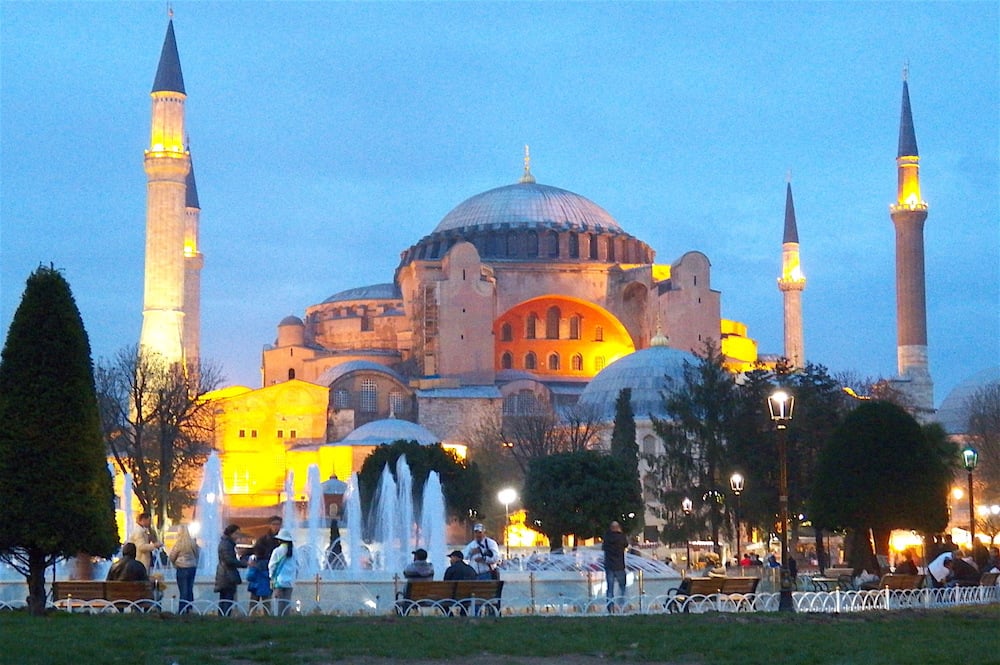
In these days of severely heightened tensions originating from Turkey’s repeated incursions into the waters of the Eastern Mediterranean in search of oil and gas, even the sending of warships to accompany drilling vessels there, it appears yet another threat looms on the horizon.
However, this specter has to do with something quite different — the possible erasure of history by means of a newly-proposed Memorandum of Understanding, which some experts believe grants free rein to Turkey to pillage and loot the movable remnants of civilizations which once flourished in Turkey going as far back as 12,000 years.
Dr. Elizabeth Prodromou, a visiting Associate Professor of Conflict Resolution at the Fletcher School, a graduate school for international affairs at Tufts University in Boston, sees the potential signing of the new agreement as “preposterous, even outrageous,” considering Turkey’s history of looting, pillaging and selling artifacts from the Hellenic and Byzantine civilizations which once flourished within what now are its borders.

In October of 2019, the government of Turkey sent a request to the United States to sign a Memorandum, ostensibly for the “imposing of import restrictions to protect its cultural patrimony under Article 9 of the 1970 Convention,” according to the introduction to the document.
However, cultural heritage experts and professionals, as well as social scientists and diplomacy experts such as Dr. Prodromou, believe this is simply a smokescreen for Turkey to continue its campaign to “destroy, appropriate and expropriate” any artifacts from all cultures which once flourished in what is now Turkey, including the Hellenic and Byzantine civilizations.
Prodromou explained that the cultural pillaging and looting which took place in occupied northern Cyprus after the Turkish invasion of 1974 reflects an ongoing pattern engaged in by Turkey regarding artifacts from any culture which preceded their own rule and will serve as a foretaste of what will happen after the possible signing of the MOU.
In a recent podcast with interviewers from the Hellenic American Leadership Council, the religion and geopolitics expert lamented that the Memorandum “would enable the Turkish state, unfortunately, to continue to do what they have done in the past; that is, to destroy, expropriate and appropriate — and that is why it is so concerning, because it will produce exactly the opposite outcome of such MOU’s, which are intended to protect cultural heritage.”
Speaking to Greek Reporter in an exclusive interview, the Tufts professor says that the United States “even considering” such an agreement is out of the question in light of how Turkey has disregarded all conventions and cultural norms as laid out by UNESCO and other global organizations.
Prodromou explains that there are four threshold conditions that must exist in order for the US to sign such an agreement — according to its own stipulations as established in its own cultural heritage laws, namely the 1983 Cultural Property Implementation Act — and that Turkey meets none of those four metrics.
“Turkey’s actions in occupied Cyprus should figure into the MOU discussions, because Turkey is considered an occupying power under international law and therefore, according to international law, Turkey must meet its obligations to safeguard and protect the cultural heritage, both tangible and intangible, in occupied Cyprus,” she states.
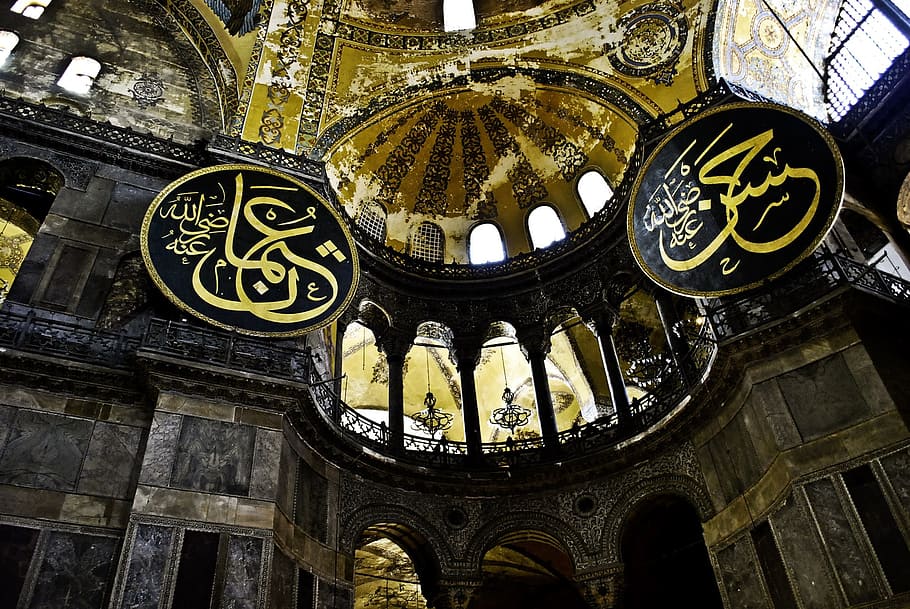
“Destroy, Pillage and Loot”
Prodromou notes that “this is obvious to anyone who has seen the documented evidence or traveled to occupied Cyprus. And indeed Turkey has utilized the occupation of the northern part of Cyprus to destroy, pillage and loot the rich cultural and religious heritage of that part of the island.
“I think that’s an important statement in and of itself, but it also relates directly to the paradoxes of the preposterous notion that Turkey could satisfy the “four threshold” requirements that are foundational for this proposed MoU,” she adds.
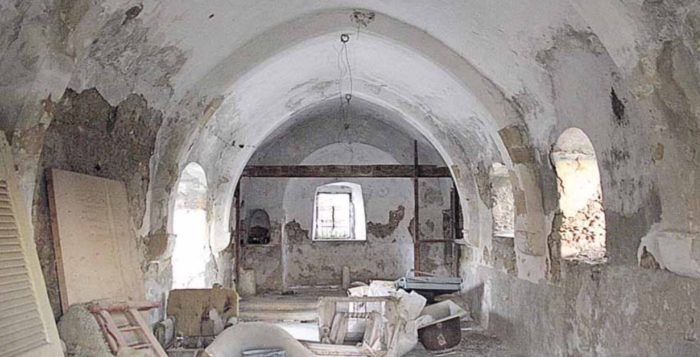
“One, the cultural property of the requesting country must be in jeopardy of pillage. If we look at Turkey’s behavior in occupied Cyprus, yes, that is indeed the case. But it is in danger of pillage by whom? The danger of pillage is directly from the Turkish occupation authorities, the very state required to protect, and entrusted with protecting, that cultural property.
“So we have empirical evidence, just in the case of occupied Cyprus, but certainly more broadly as well, that the notion that Turkey will be protecting cultural heritage from being looted is preposterous,” Prodromou charges.

“And some would say, “It’s not the Turkish state that has done the looting.’ Well, in the case of occupied Cyprus, we know that, in one of the most infamous cases, for example the priceless mosaics of the Church of Panagia Kanakaria in Lythrangomi, that Turkish officials were actively engaged in disassembling these mosaics, removing them from the church, and then preparing them to be transported out to a criminal known for art theft in Germany, to be put up for sale on the international black market for art.”
“So we have a brilliant case that I think is paradigmatic of the broader problem with the notion that Turkey could be a party that could act responsibly in terms of its responsibilities.”
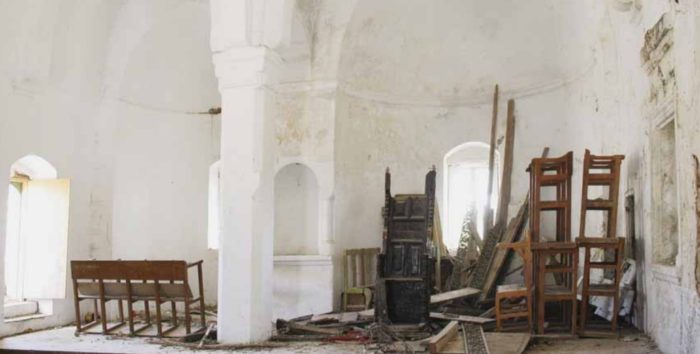
In occupied Cyprus, she says in the podcast, Turkey used its pillaging and looting “as a cudgel” to destroy the living memory of Christian civilization in the occupied areas. It was the clear purpose, she states, of Turkey to “erase the living evidence” of any culture preceding their takeover of northern Cyprus.
Cultural Diplomacy
The recent move requesting the MOU with the United States, she explains to Greek Reporter, comes under the umbrella of what is called “cultural diplomacy,” which often tends to be overlooked in international relations.
“Certainly if we think about Turkey now and its actions, not only in the Middle East and the entire Mediterranean but in terms of US/Turkey relations, I think we tend to focus on political and military affairs, or economic issues, and now, energy. I think cultural policy and cultural diplomacy are so important, and this proposed MoU really highlights that.
“I think it speaks to the fact that Turkey, like other states, understands that cultural diplomacy is part of their larger diplomatic tool box; and in the case of Turkey, this proposed MOU is completely consistent with the broader ambitions and behaviors of Turkey for geopolitical hegemony on three continents — with Turkey lying at the intersection of Europe, Asia and Africa.”
Turkish Aspirations to be a Global Power
“Turkey has been very explicit since the election of the AKP and Erdogan in 2002, about aspirations to become a Great Power, a global power. Turkey has either the sixteenth or seventeenth-largest economy in the world, depending on economic fluctuations. Given Turkey’s geopolitical importance for the transatlantic alliance, Ankara views this MOU as intrinsic to Turkey’s global historical importance,” Prodromou explains.
“So cultural diplomacy has been a very active piece of the Erdogan government’s foreign policy, and it is also tied to his domestic strategy of combining exclusivist Turkish nationalism with Islamism. I think that context is very helpful in thinking about ‘Well, where does this come from, and why the timing, why now, and is it something new?’ And it is not new,” she states.
“Other examples of Turkey’s cultural diplomacy include that country’s financing of the building of mosques in Europe and Africa. And in Europe this is not just limited to Southeastern Europe, the Balkans — the territorial footprint of the Ottoman Empire — but beyond.
“The Turkish state and PM Erdogan and his ministers have said that the project of mosque building, and all that goes with that, such as religious schools that are associated with mosques, the imams who are imported from Turkey — is aimed to bring all of the Turkish populations of Europe closer to Turkey and to unite them with the motherland,” Prodromou explains.
“So, through the mosque-building project, through the imams who are sent to preach in those mosques, through the textbooks that are used and through the religious schools that are associated, Turkish and other Muslims learn a certain kind of history, a certain kind of international relations narrative that figures Turkey and the Ottoman Empire as the wellspring of all things Muslim and of Muslim culture in Europe,” the professor states.
“So Turkey has recognized very clearly the utility of cultural diplomacy as part of its state’s foreign policy cultural toolbox. Turkey is not the only state to use cultural diplomacy as part of its foreign policy, but we need to understand that Turkey’s cultural diplomacy strategy is an active component of the country’s broader geopolitical ambition, to be a global great power.”
“It’s important to understand the timing of this MOU. Why now, in 2019-2020? And to realize that it’s not something out of the blue, just as in the reversion of Hagia Sophia to a mosque was not something surprising to people who are following all the explicit and implicit signals that the Turkish state has been giving for years now.”
Prodromou then adds “The MOU is part of the broader intersection of culture and geopolitics in terms of Turkey’s ambitions in Europe, Asia and beyond.”
Turkey’s Repeated, Brazen Refusal to Follow UNESCO Rules
Regarding the UNESCO issue, the UNESCO Convention is very clear in terms of the signatory states’ responsibilities under the ‘UNESCO Convention Concerning the Protection of the World Cultural and Natural Heritage.’ “Turkey has breached its responsibilities under the 1970 Convention to protect what it considers its own immovable cultural patrimony, including the great cathedral of Hagia Sophia — which was inscribed on UNESCOs World Heritage List in 1985 — but also in terms of Turkey’s actions in Turkish-occupied Cyprus,” Prodromou charges.
“Now, in the case of occupied Cyprus, we can show that there is a direct contradiction between Turkey’s responsibilities under international law and its protection of cultural patrimony,” she notes.

“The key thing for us is that the UNESCO Convention obligates states as the parties responsible for carrying out their responsibilities (as opposed to private entities),” she explains.
“According to Article 4 of the Convention, states must recognize their duty to 1) Identify 2) Protect 3) Conserve 4) Present and 5) Transmit to future generations the cultural heritage of sites,” the professor says, adding:
“It’s interesting about the ‘Identification’ aspect — the responsibility to identify a movable or immovable object, etc. To be able to identify a church as a Syriac Orthodox Church as what it really is, is important. When you see these sites in Turkey, you may see, for example, the word ‘Roman;’ ‘Roman Empire,’ ‘Eastern Roman Empire,’ etc. But you rarely see the word Byzantine, Greek, Syriac, or Armenian, and you never see the words Orthodox Christian.
“That responsibility, to identify sites, is very important under the UNESCO convention,” Prodromou emphasizes. “And we know, from countless examples throughout Turkey, that cultural heritage and properties are not properly identified.”
Erasing Cultural Origin
“In fact,” she charges, “they are deliberately mis-identified, and they are so misidentified in order to occlude or erase their accurate and precise cultural and religious origins.
“Turkey has violated its responsibility on every level,” according to Prodromou, regarding these most basic of all historic preservation precepts, adding “This goes well beyond the most current example of Hagia Sophia.
“And this other precept, about transmitting the culture to future generations — this is about history, about the connections between cultural heritage and cultural property and the learning and transmission of history.
“And in the case of Turkey, the history as we see in public school textbooks presents the country’s rich religio-cultural history by either the writing out of communities that were in Asia Minor prior to the Turks’ arrival, or presenting them as fifth columns tied to external states — who are therefore security risks inside Turkey,” Prodromou says.
The professor explains “Cultural heritage policy in Turkey has been utilized in the service of rewriting history and either writing out and erasing those communities from history before the establishment of the modern Turkish state in 1923, or writing a new history that presents the Christian communities indigenous to Asia Minor, especially the Greek, Armenian, and Syriac Orthodox Christians, as enemies of the state, and not equal citizens.”
“And so, cultural property can be used to accomplish that kind of a goal, which is ultimately to erase the memory and existence of those religious minority communities — including the Ecumenical Patriarchate and other Christian communities.”
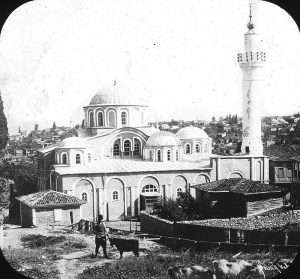
Chora Monastery Reconversion was Trial Balloon for Erdogan
As for other violations of Turkey’s responsibilities under the UNESCO Convention, the decision on the Church of the Holy Savior at Chora, which was taken in November of 2019, was “the template for what happened with Hagia Sophia,” according to Prodromou. “Sadly enough, the decision received almost no attention at the time of the decision, either by international media or by policymakers.
“Although it’s quite likely that the Erdogan government had already made a decision to proceed with the Hagia Sophia decision, I think that the Chora decision was an important trial balloon,” she surmises.
“When that balloon went up and the world ignored it, Ankara felt more confident that there would be little blowback for the coming Hagia Sophia decision — or even if there were, Turkey has had nearly an entire century of pillaging and destroying the cultural heritage of its minority communities, and has faced no consequences from that.
“Ankara’s calculus likely estimated that, based on the longterm and recent fact of no consequences for Turkey regarding its cultural heritage policy, the Hagia Sophia decision went forward.”
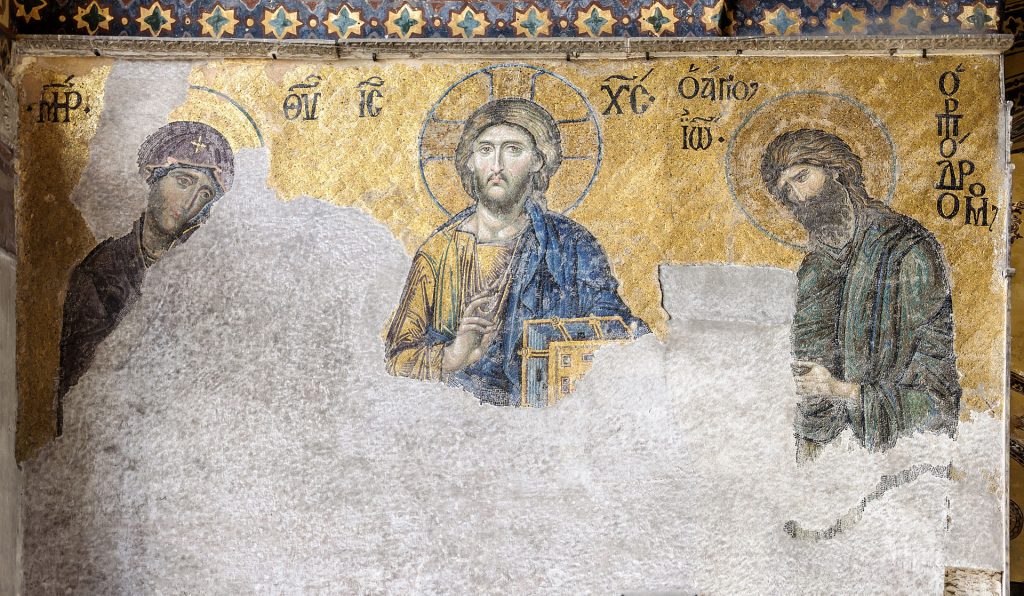
Hagia Sophia Alterations Violate UNESCO Rules
“If we get to the other UNESCO responsibilities, for example Articles 4 and 5, which obligate states to preserve the integrity of World Heritage sites in terms of their public presentation, Turkey has already failed to meet its obligations,” the professor charges.
“For example, Turkey has discussed using special light-mapping technologies, or perhaps even more primitively, hanging sheets, to cover what’s left — and that’s not a lot— of the mosaics at Hagia Sophia.
“The Turkish authorities have already put down prayer carpets in the Hagia Sophia, which has already changed the unique acoustics of the building. So that in itself is a violation of the responsibilities about presentation.”
“What any signatory of the Convention must do if they intend to make any changes is submit a proposal to UNESCO for review, and Turkey did not do that,” Prodromou adds.
“Turkish state officials have stated that they have carte blanche to make the aforementioned changes, arguing that ‘This is our sovereign territory and anything in it is the property of the state,'” she says.
However, Prodromou points out, “Article 6 of the Convention mentions that it respects the sovereignty of the states on whose territory the sites are located. But respect for sovereignty does not negate these responsibilities — on the contrary, it rather reinforces them.
“So, then, Turkey’s violations become even more egregious because yes, this property is located on your territory and you are responsible then as the contracting state to meet your duties (to preserve it, etc.)” she states.
No Sanctions
In reality, Prodromou charges, Erdogan has actually flipped these rights and responsibilities, focusing solely on the rights of the state and ignoring its responsibilities to protect historic sites. Not only that, but it has never once faced sanctions regarding its many instances of destruction of cultural and religious heritage.
“Every time they have faced sanctions, it was because of military or political issues,” she explains. “The 1975-1978 US arms embargo on Turkey was related to the US Foreign Assistance and Military Sales Act, and had nothing to do with the recorded destruction and pillaging of cultural heritage sites. Indeed, there was no discussion of the embargo, by Congress or the State Department, when it came to cultural and religious heritage destruction by Turkey in its two-stage invasion and subsequent occupation of the northern part of Cyprus.”
The ongoing discussion among several EU foreign ministers about sanctioning Turkey also will likely disappoint those hoping for at least some kind of gesture on behalf of Turkey’s looted and pillaged cultural sites, as Prodromou noted that the EU meetings will focus on Turkey’s bellicose activities surrounding energy exploration in the Mediterranean.
The EU’s priority, she says, is to get Turkey to stand down from their exploration in the Exclusive Economic Zones (EEZs) of Greece and Cyprus and associated maritime provocations by Ankara vis-a-vis France.
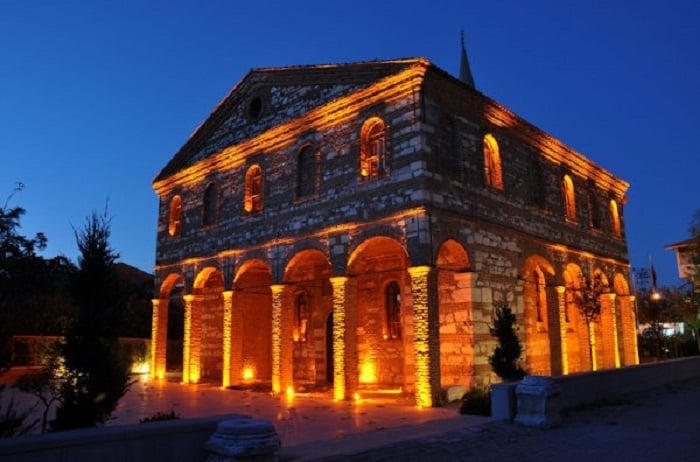
“In short, it is impossible to make a serious claim, based on empirical evidence, stretching over the lifespan of history of the republic of Turkey, and thrown into sharp relief by the recent Hagia Sophia and Chora decisions, as well as the demolition of St. Georgios Greek Orthodox Church in Bursa, that Turkey is willing or capable of satisfying its cultural heritage obligations under UNESCO,” Prodromou states.
Non-Transparent Decision by State Department
“It is very concerning that the MOU could be signed,” she emphasizes, “especially because the decision is not a transparent one. A committee of experts — the Cultural Property Advisory Committee, in the State Department — evaluates the proposal, and then renders a recommendation to the Assistant Secretary and the Bureau of Educational and Cultural Affairs.
“The Assistant Secretary takes the recommendation under advisement, but can render a different decision, so the lack of transparency is accompanied by a kind of procedural arbitrariness,“ she states.
That’s why, she says, it is “particularly important for people to contact their Congressional officials to voice their concerns over the possible signing of the MOU.
“At a time in the US when there is great sensitivity to and understanding of historical accuracy and inclusion, with recognition of the symbolic meaning and active impact of cultural sites as signs of human dignity and respect for diversity, one hopes that the US government would be equally attuned to respect for diversity and inclusion in our foreign policy decisions regarding cultural heritage,” Prodromou states.
“The proposed MOU would put the US on the wrong side of international law and would signal that America does not support the protection of cultural heritage as a form of present-day inclusion and diversity — and the historical remembrance of cultural and religious diversity.”
“Memoricide”
“Turkey has been using its “sharp power” repertoire, including cyber tools, to build influence. It uses misinformation, disinformation, hybrid warfare and soft warfare” to further its interests, Prodromou charges.
“What is especially concerning is that Ankara is now combining its soft power of cultural heritage policy with the shape power of cyber influence operations, to erase the memory of its religious minority communities,” she explains.
“People see things on websites that read ’The Mosque at Iznik,’ for example. If there is no indication that that building at one time was the Church of Nicaea, who would know? And the community, the historical community attached to that, recedes from memory and the physical evidence of that community is erased. I call that ‘memoricide.’ Cultural diplomacy by Turkey has been a process of accomplishing memoricide.”
Below is the public summary of the prospective Memorandum, proposed by Turkey to the United States in October of 2019.
See all the latest news from Greece and the world at Greekreporter.com. Contact our newsroom to report an update or send your story, photos and videos. Follow GR on Google News and subscribe here to our daily email!



